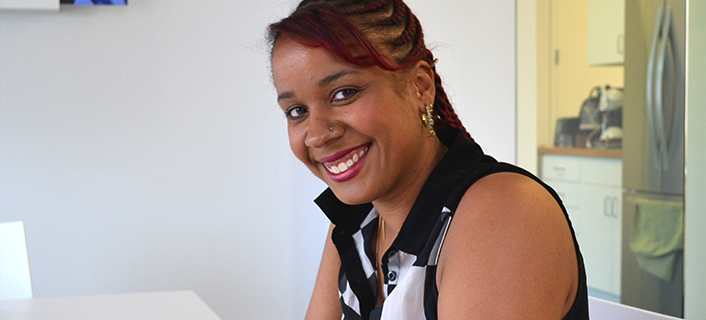Omayra Pizarro is a Community Health Worker with a.i.r nyc, an organization whose mission is to improve the quality of life of asthmatics in New York City, helping families break the revolving cycle of poverty that is worsened by chronic disease. a.i.r. bronx, which is a.i.r. nyc’s Bronx-based program, will play an integral role in BPHC’s asthma project.
Omayra Pizarro loves working with kids. She worked for five years with young children of immigrant parents, and soon developed an additional interest in medicine. In the search for opportunities to work in both healthcare and with youth, she found a.i.r. nyc.
a.i.r. nyc provides home-based asthma education and support for asthmatic children in New York, and will play an integral role in BPHC’s Asthma project. Ms. Pizarro joined a.i.r bronx, a.i.r. nyc’s Bronx-based program, a year and a half ago as a Community Health Worker. She now visits families at home, providing asthma education and helping to reduce environmental asthma triggers.
While many families receive medical support for asthma, home visits allow Ms. Pizarro to make sure that families actually follow their doctor’s advice. “You can tell if a parent is…not really consistent with medication just by asking ‘I need to see the medication, I need to see if it is expired, do you know how many pumps are left?’”
Ms. Pizarro then works with families to integrate asthma management into their day-to-day lives. “Repetition is very important with some of these parents,” she has learned, which is why she arranges several follow-up visits to teach (and re-teach) families about asthma symptoms, triggers, and treatments, and to monitor their progress.
Home visits also allow Ms. Pizarro to identify environmental asthma triggers. “In the home assessment, what I’m looking for is if they are having problems with leaky faucets, mold, dust, peeling paint, carpet, clutter issues,” all of which can exacerbate asthma symptoms.
Identifying these triggers is only the first step, however – fixing them is more challenging, and can involve confronting landlords and building managers and even taking legal action. “There are some families that are kind of scared to take that next step,” which is where Ms. Pizarro steps in. “We’ll write a letter to the management office or visit the management office…or make a referral for an inspection, which can lead to a Commissioner’s Order which basically orders the super or the landlord to fix certain things.”
“Sometimes you need a little push,” she says. “So if you’re there to help the family advocate and support themselves, that’s a big help.”
Click here to download a printable flyer of this profile
(Published January 5, 2016)
